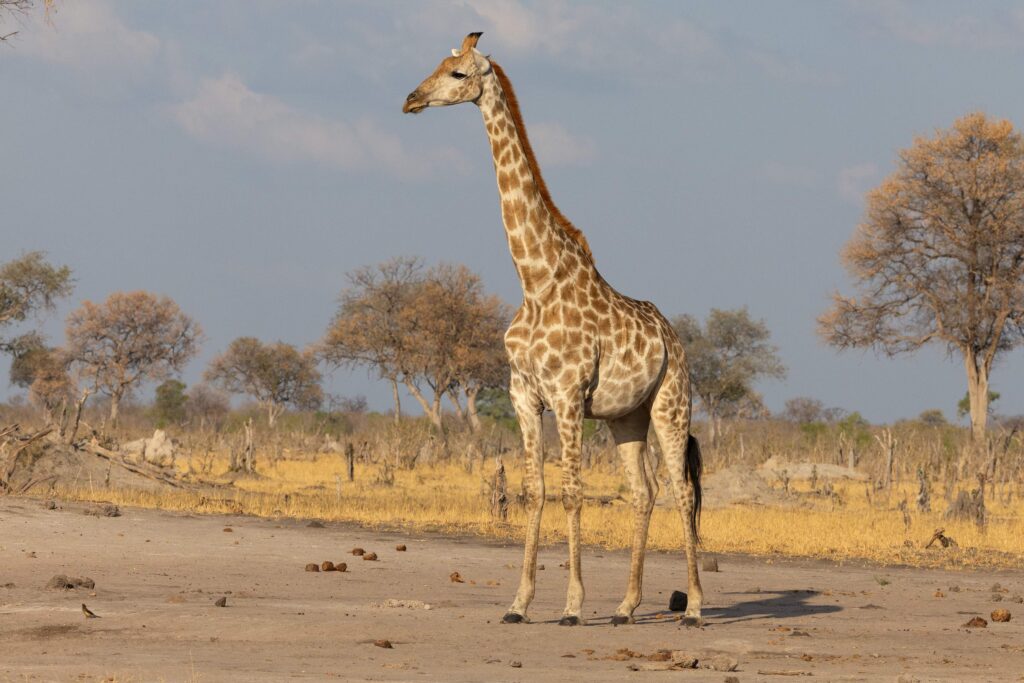
Zimbabwe experienced a disastrous 2023/24 rainy season culminating in the worst drought we have experienced in decades, so the prospect of doing the annual 24-hour game count in Hwange wasn’t as appealing as usual. The count was held in the middle of October when the heat is usually at its most oppressive. However, meeting up with close friends, seeing some lovely animals, and having great birding whilst making new memories is always very special, and the sunrises and sunsets are spectacular.
It was a delight to find a pack of twenty-five pretty painted dogs, including a number of adorable pups, resting in the shade along the road into Main Camp. The dogs were in prime condition, their full bellies evidence of a successful morning hunt. It was wonderful to see them thriving and to marvel at how they blend in perfectly with the leaf litter, dry grass and dappled sunlight.
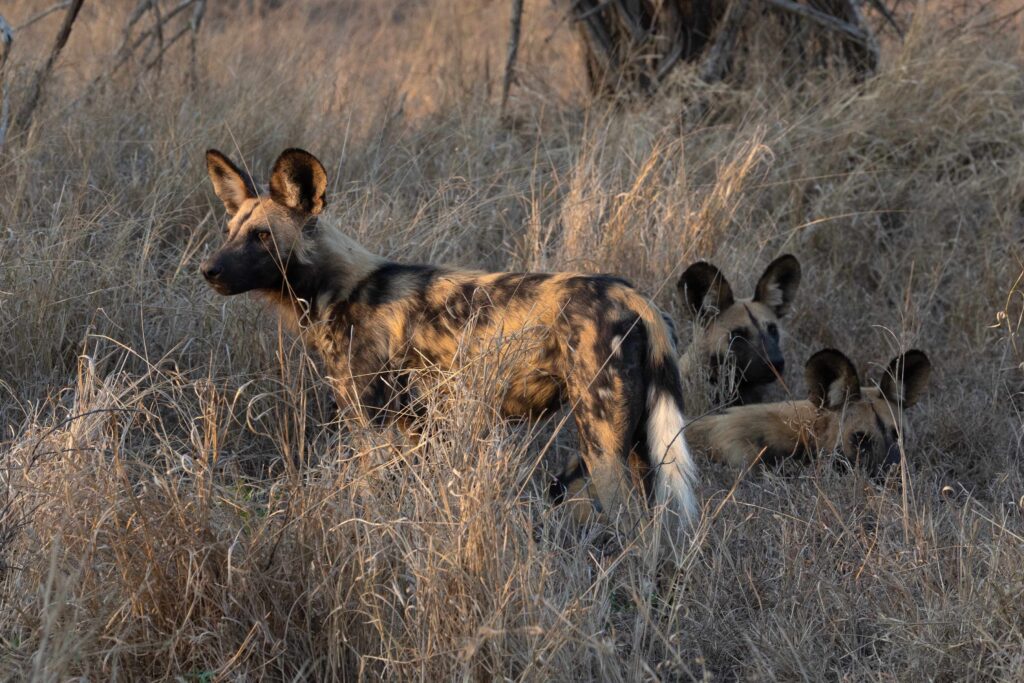
Once checked in, it was no surprise to find the Park exceptionally dry although the water points in the Main Camp area where our team was based, were (just) managing to keep up with high demand from plenty of animals, most notably large numbers of elephants.
There was very little food to be had anywhere near the pans. The bush was parched and arid although several species of tree and bush were beginning to leaf. The delicate gold, lime and orange leaves of the Mopane (Colophospermum mopane) were starting to shoot and as always, the Camelthorn trees (Acacia erioloba) were out in full leaf, showing up like beacons amongst all the grey and brown. The vleis were almost grassless and dust flew everywhere. Elephant herds dominated with many young afoot. An unusual number of very tiny, newborn elephant calves were evident perhaps pointing towards premature births as a result of stress. We wonder how many will survive before rains come.

On the way to our count, we were treated to a stunning view of a beautiful female leopard. At first, she remained well hidden behind a blue bush (Diospyros lycioides) but she obliged us by sauntering out, stalking imaginary prey and looking all around her before lithely scaling up a nearby tree. She made herself comfortable before gazing out with tawny, yellow eyes at the vehicles lined up along the road – a perfectly posed queen overlooking an admiring audience. What a gorgeous cat!

The first recorded mammal on the count sheet was a stream of wildebeest, well over eighty in number, some of which stopped to drink while others sauntered on to cross the railway line further along. A family of eight zebra were next and numerous herds of elephant followed, visiting the pan at intervals during the night. Those people “off duty” didn’t manage much rest due to the constant grumbles, arguments and shrieks of the “hobos of bobos” (lots of baboons) roosting close by in the trees. Black-backed Jackal and a Spotted Hyaena were heard away in the distance, but very little else was recorded after dark except for two cute bushbabies peering over the branches close to us. Morning saw a visit from a few impala, some kudu and more wildebeest, a family of warthogs and we ended our count with a lovely herd of 280 buffalo, including many young, that appeared out of a billowing dust cloud.
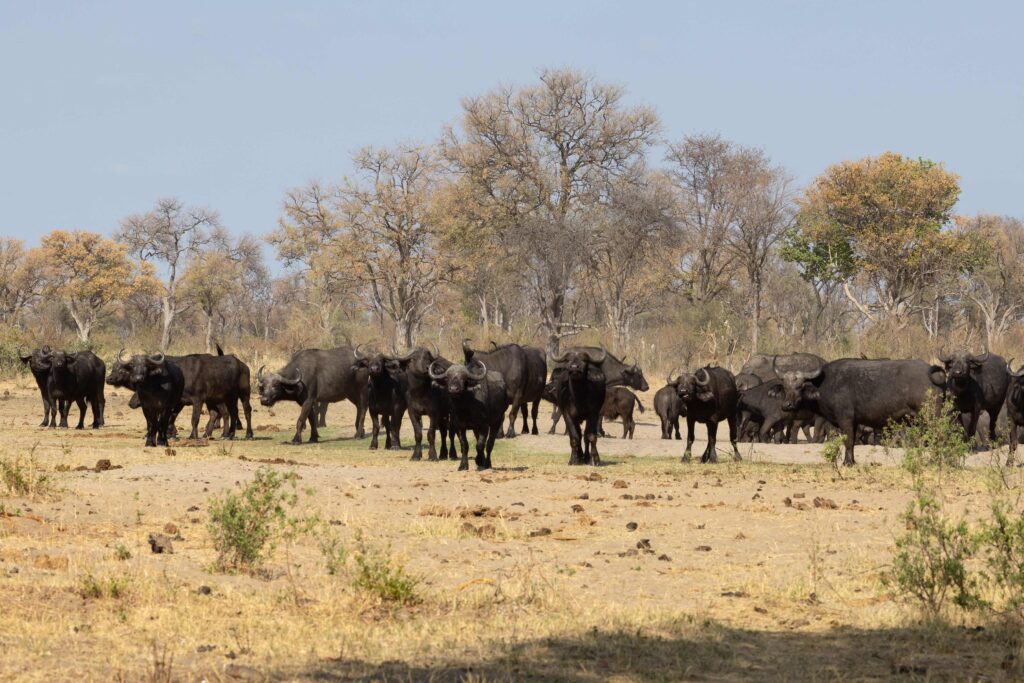
The birding was excellent, not so much in numbers of species but in quality. An impressive pair of Saddle-billed Storks lingered around the periphery for the duration. Then we heard a loud whooshing sound over our heads as a magnificent Martial Eagle dived from the sky behind us like a jet fighter, attempting to grab a Helmeted Guineafowl. Although the kill wasn’t successful, the sound was astoundingly loud, it’s speed amazing to see, scattering the guineafowl in a noisy clatter. Shortly thereafter, a stunning Dark Chanting Goshawk descended to sip gracefully from the clean water flowing into the pan.

The trees were alive with a variety of little birds. We picked up a surprising number of Red-headed Weavers in various stages of maturity along with Violet-backed Starlings, Cape Glossy Starlings, a Black-headed Oriole, a pair of Scimitarbills and a family of Green Woodhoopoes fossicking about and chattering incessantly. There was a never-ending stream of Yellow-fronted Canaries, Black-throated Canaries, Yellow-throated Petronias, a few Black-eared Seedeaters, Golden-breasted Buntings, Southern Grey-headed Sparrows and crowds of Cape Turtle Doves coming to the water to drink. A lone Black-winged Stilt waded about in the pan and a Hamerkop popped in briefly towards evening. Just after dark, a pair of Black-headed Herons appeared and had a noisy altercation on the edge of the pan before taking off while still grumbling and shouting. A startlingly handsome Melanistic Gabar Goshawk snatched a Cape-Turtle Dove at the water’s edge and as it scuttled under a nearby bush to pluck and begin feeding, two other Gabar Goshawks arrived to stand with feet in the water for quite some time. The brilliant yellow of an African Golden Oriole grabbed our attention when that gorgeous avian came for a drink.
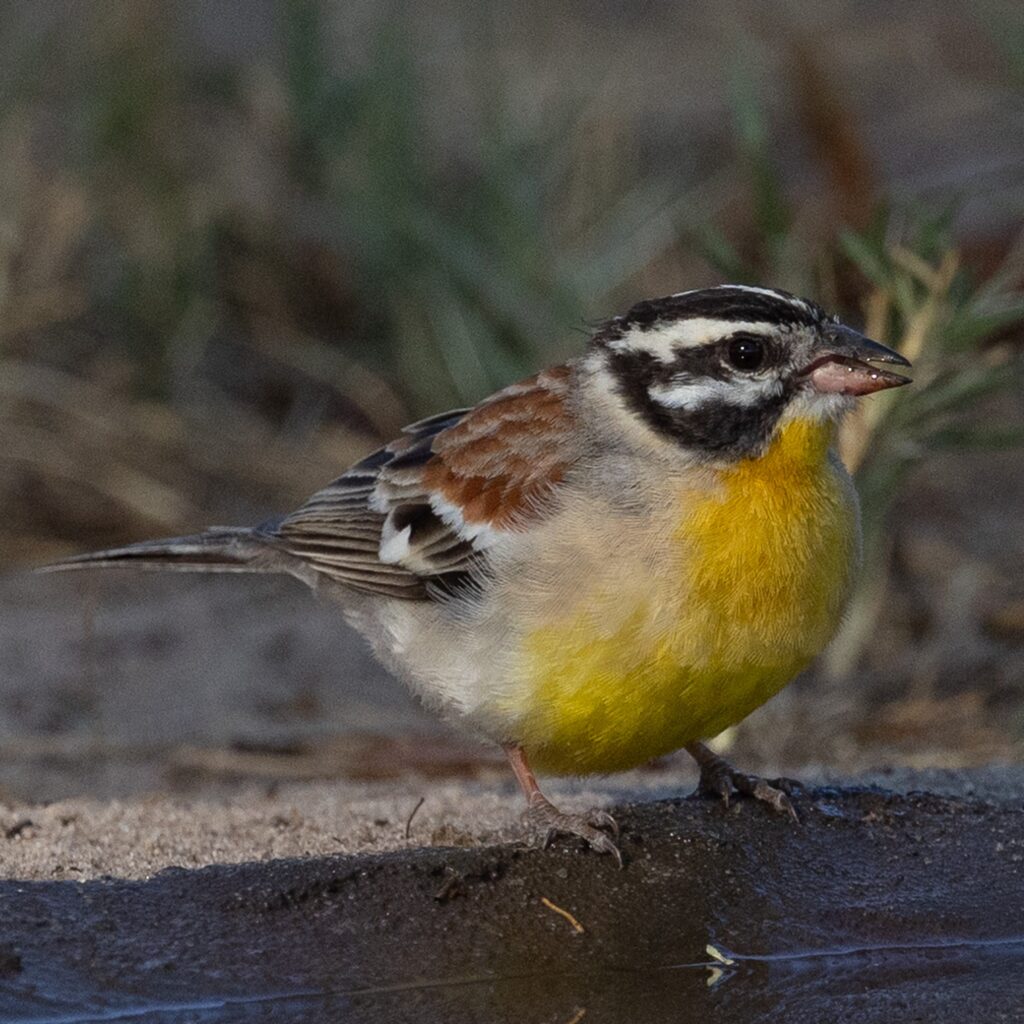
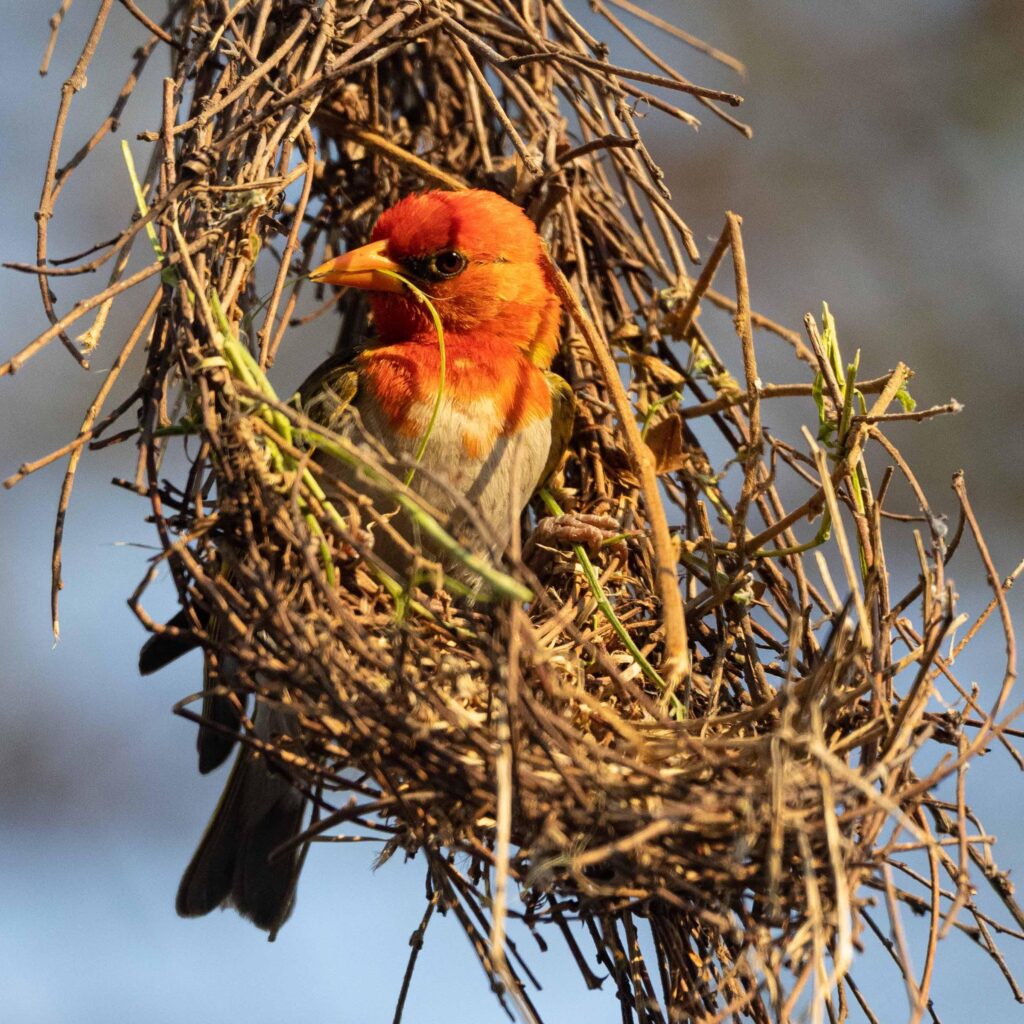
After the count, we caught up with a large herd of buffalo that had been roaming the Kennedy vlei for a few days and further along, we found lion feeding on a 2-day old elephant carcass. Most of the fifteen cats sighted had already had their fill and were off to seek some shade for the day. There were several trees loaded with vultures awaiting their turn at the feast. We found a majestic Sable bull with a fine set of horns, cautiously making his way down to drink at Kennedy Two pan, and on one of the loop roads, a stunning cheetah male was seen sunning himself on the ridge of an ant heap.
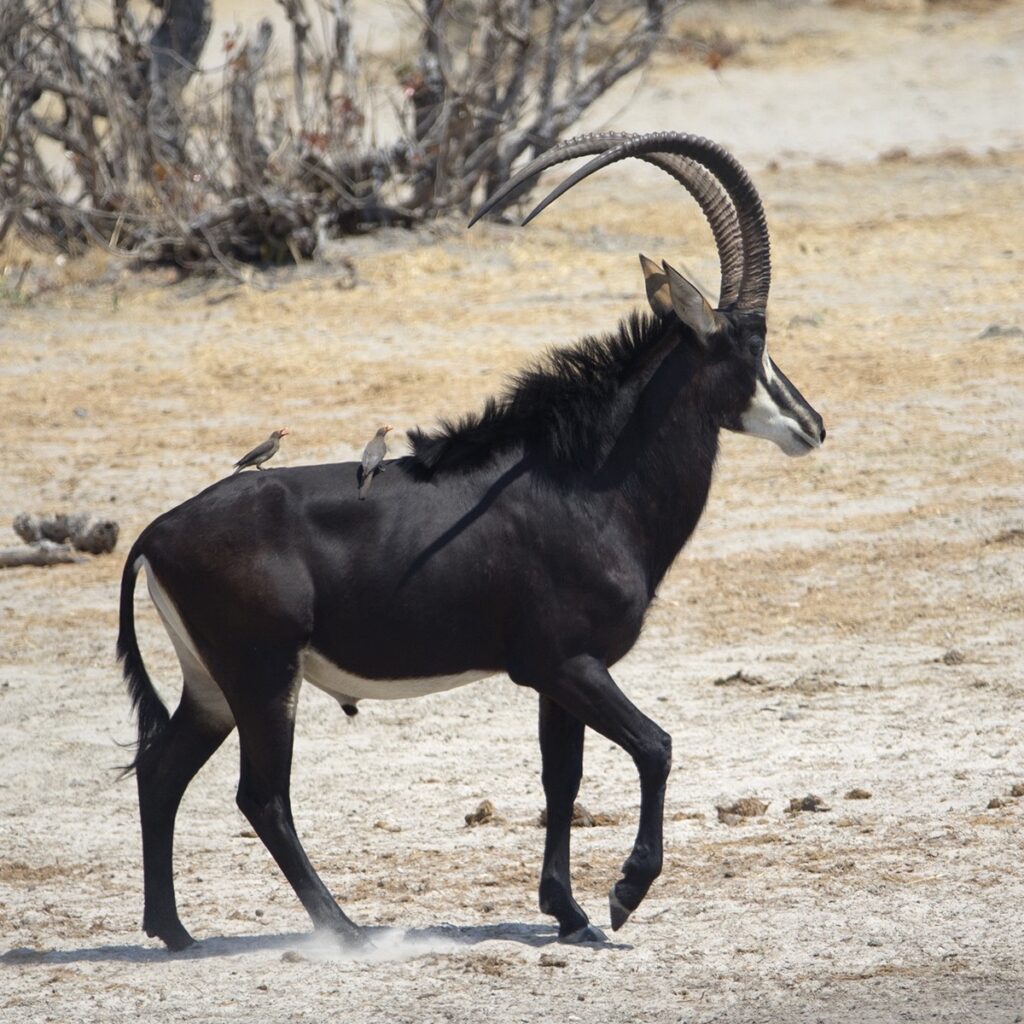
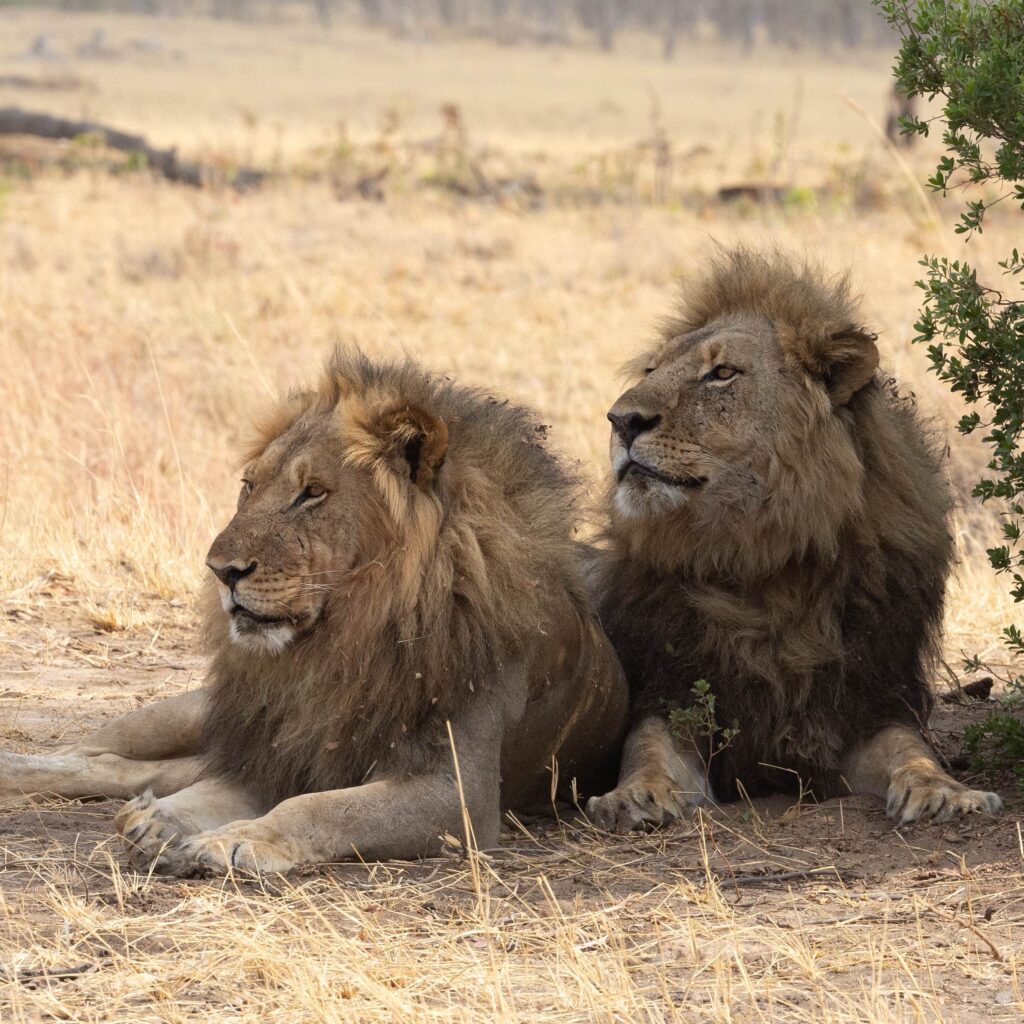
We ended our stay in the Park at Guvalala enjoying the facilities of the re-furbished platform. A lone hippo inhabited the pan whilst a variety of animals came to drink throughout day. Stately giraffe, cautious kudu, a sounder of warthogs, some glossy impala, several hesitant roan antelope, a troop of baboons, a number of nocturnal hyaena whooping and cavorting in and around the water, a dazzle of zebra and, of course, a never-ending stream of elephants visited the pan. The battery system that has been installed successfully provided water throughout the night.
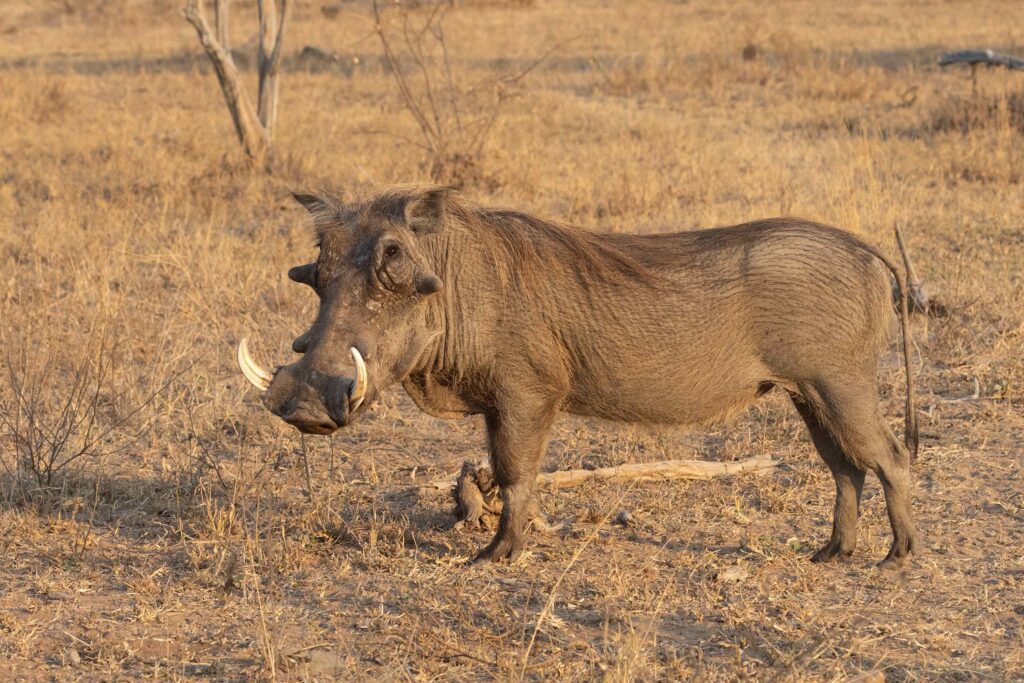
Waking at dawn, we noticed what looked like a dead, young elephant stuck in the thick, black, sticky mud. After observing it for a while, it moved, curled up its trunk, writhed in the mud and gave a heart-wrenching gurgle. It was still alive! A lone adult elephant cow close by, that we erroneously assumed to be its mother, kept vigil, watching over the calf.
Acting quickly, we eventually managed to get a message through to Jason Friend, our man at Main Camp, to bring his Friends of Hwange (FOH) team urgently, with several sets of straps that were recently donated expressly for animal rescue. The team arrived about an hour later and, keeping a watchful eye on the hippo that was taking marked interest in the activity, as well as the lone elephant cow and her companion that appeared on the scene as soon as our interest in the calf became evident, the rescue operation began. Using the FOH Landcruiser, it took about 30 minutes to attach the straps to the calf and pull it successfully out of the mud. Fortunately, the victim was not very big so use of a tractor was not necessary.
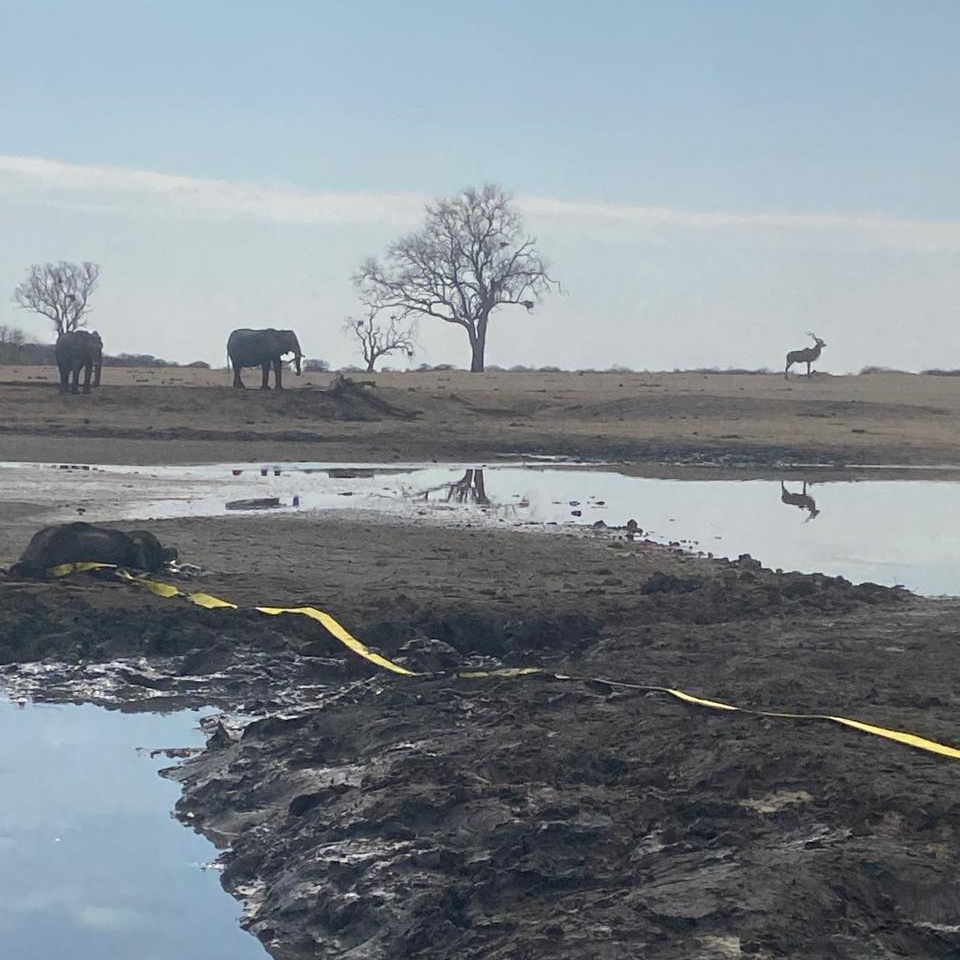
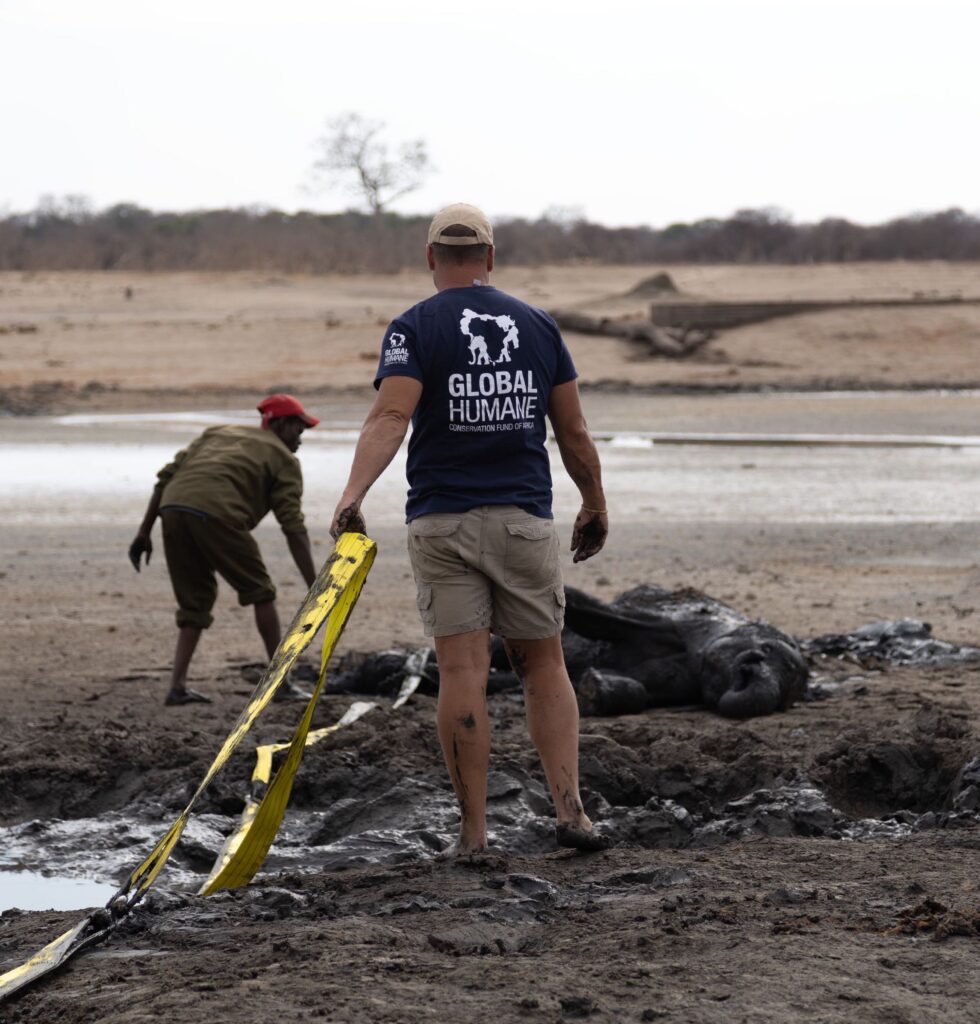
Once released from its glue-trap, the exhausted little animal rested for a while before mustering up the energy to struggle to its feet. As it gained its balance, it slowly ventured forth to join up with the two elephant cows that stood waiting patiently close by.
It was interesting to note that the mother of the calf (the second cow to arrive on the scene) was not the least bit sympathetic, nor did she appear visibly pleased to be re-united with her sorry-looking offspring. She lifted her head, sniffed at the calf, then immediately turned on her tail and headed straight back into the bush with her muddy, traumatized, baby trailing some distance behind her.
Our most grateful thanks to Jason and his team for yet another job well done.
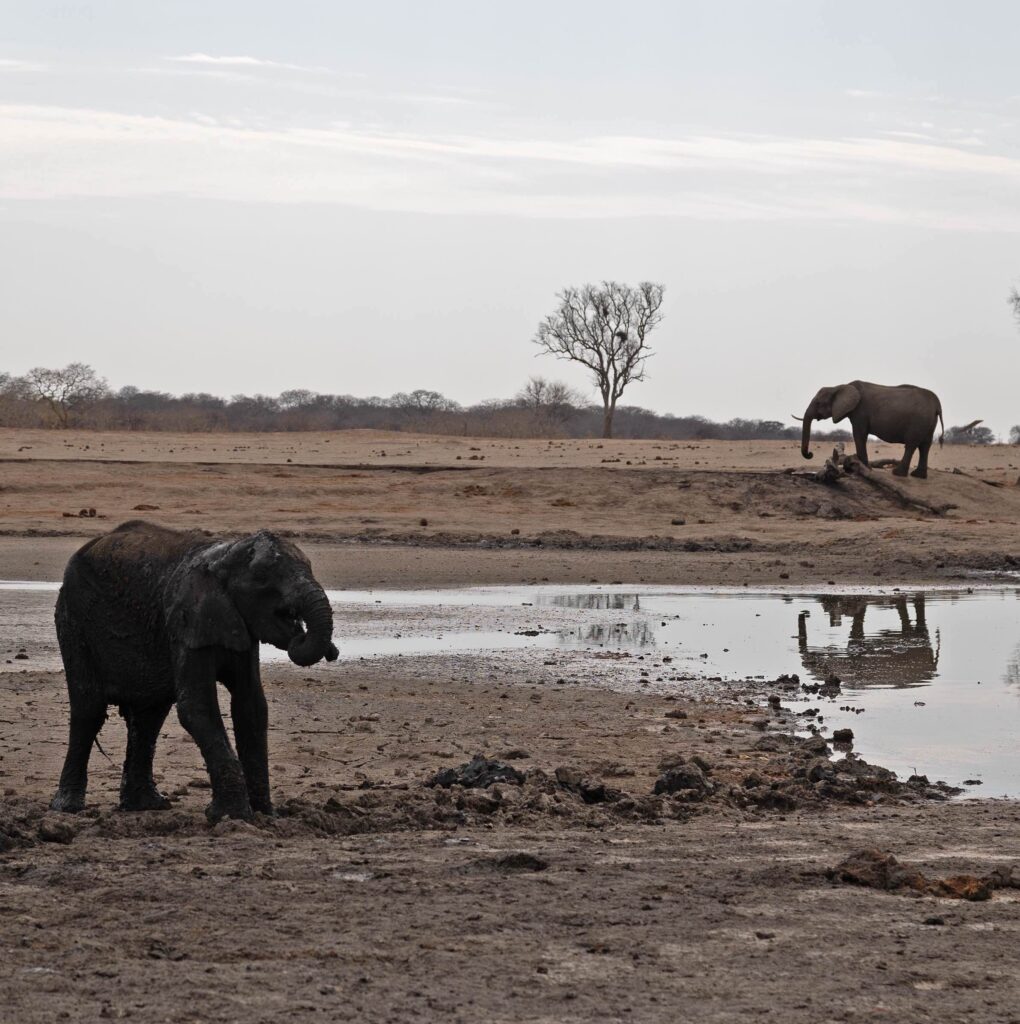

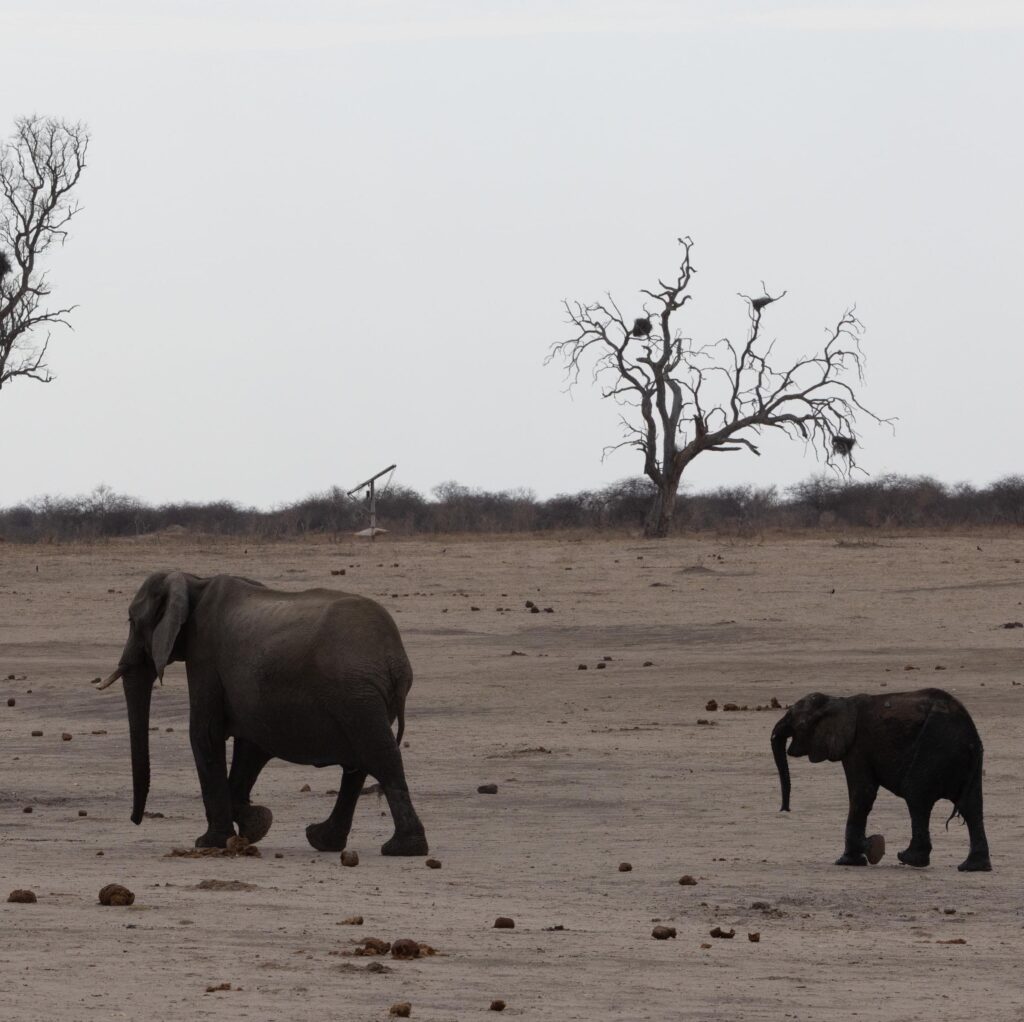

Although there are a few weeks to go yet before the onset of the rains brings relief to this tremendously difficult season, we’re pleased to note relatively few elephant deaths to date.
Let’s hope that the Park enjoys a wet and favourable rainy season ahead.
Sincere appreciation must be extended to the following:
- WEZ Matabeleland Branch for organizing and running the 2024 Game Count.
- Global Humane Conservation Fund of Africa for the donation of animal rescue straps.
- The Director General of ZPWMA, Dr Fulton Mangwanya and all the staff at Main Camp for their ongoing assistance and co-operation. All work in the Park is undertaken in close collaboration with ZimParks.
Jenny Brebner and Paula Dell
Images – David Dell

